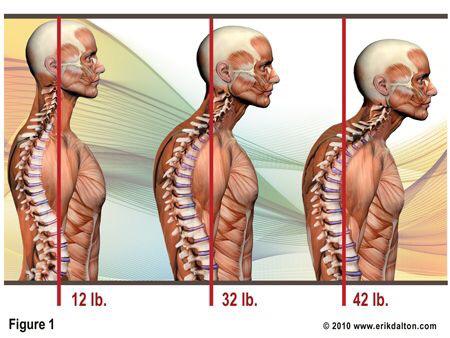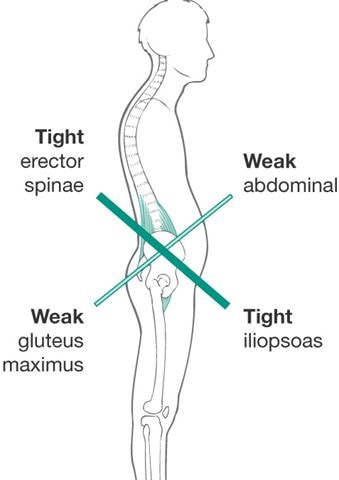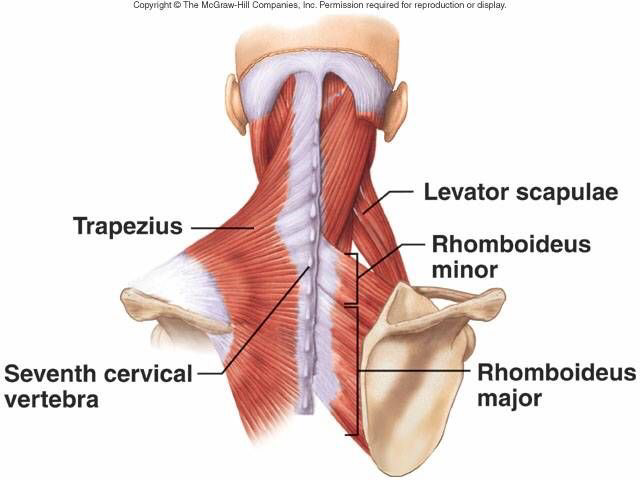|
Massage therapy can provide relief for some people with fibromyalgia by helping to reduce pain, muscle stiffness, and tension. It can also improve circulation and promote relaxation, which may help alleviate symptoms such as anxiety and fatigue commonly associated with fibromyalgia. Additionally, massage can stimulate the release of endorphins, the body’s natural painkillers, providing further pain relief. However, it’s important for individuals with fibromyalgia to consult with their healthcare provider before starting any new treatment, including massage therapy, to ensure it’s safe and appropriate for their specific condition.
Here are some additional ways that massage therapy may help individuals with fibromyalgia: 1. Improved sleep: Many people with fibromyalgia struggle with sleep disturbances. Massage therapy can promote relaxation and help improve sleep quality, allowing for better restorative rest. 2. Reduced stress and anxiety: Fibromyalgia often coexists with stress and anxiety. Massage can help reduce stress hormones like cortisol while increasing levels of serotonin and dopamine, which can improve mood and reduce anxiety. 3. Enhanced range of motion: Fibromyalgia can cause stiffness and limited mobility in muscles and joints. Massage techniques such as stretching and myofascial release can help increase flexibility and improve range of motion. 4. Trigger point release: Trigger points, or areas of tightness and tenderness in muscles, are common in fibromyalgia. Massage therapy can target these trigger points to help release tension and alleviate associated pain. 5. Improved circulation: Massage can stimulate blood flow to affected areas, which may help reduce inflammation and promote healing of tissues damaged by fibromyalgia. Overall, while massage therapy may not provide a cure for fibromyalgia, it can be a valuable part of a comprehensive treatment plan aimed at managing symptoms and improving quality of life. As always, it's essential to work with a qualified healthcare provider to develop an individualized approach to managing fibromyalgia symptoms. #fibromyalgia #muscularpain #immunedisorder #massagetherapy #painrelief
0 Comments
CBD works on the endocannabinoid system in your body. This system works to regulate pain, immune function and sleep among other things. The receptors are found all over the body and can be utilized by applying CBD in topical form to block pain, reduce inflammation and promote a feeling of calmness and well being.
When included in a massage, CBD’s interaction with your endocannabinoid system can induce healing of inflammed muscles and tissues. Add CBD Oil to your next massage. Book now #cbd #hemp #massage #muscletherapy #massagetherapy #cincinnatimassage #cincinnatimuscletherapy Got a Case of Tech Neck?
Neck Strain Causes, Symptoms, and Natural Relief Ever watch a pre-PC era movie and ask yourself: How were these people possibly doing any productive business with just pen and paper. No laptops? Not even a desktop...? The good news is that time has proven that even those pre-tech eras kept our world going. But the bad news is that, although tech has made our world so much more productive, the excessive usage of screens has resulted in people sitting for much longer, statically, staring at their screens. And this reality takes its toll, physically, with the first “victim” being the neck. This “neck abuse” has a trendy name: Tech neck. Tech neck may be more prevalent right now, as most of us are stuck working from home at what may not be ideal workstations. Continue reading to learn a bit more about what causes this problem and how you can go about fixing it. What is Tech Neck and How is it Caused? Tech neck happens when we spend too much time with our head and neck extended too far forward over our body while looking at a computer screen. It can also happen when people repeatedly tuck their heads down over their chins and hunch their shoulders while sending or receiving text messages on a cell phone. The prolonged effect of this pressure can cause pain in the muscles, ligaments, vertebrae and discs in the neck and upper thoracic regions. Tech Neck Symptoms and Diagnosis Neck and shoulder pain are most common, but upper back pain, carpal tunnel syndrome, and migraines or headaches may also indicate the tech neck condition. But if we look at the most common indications of tech neck, those that doctors use to diagnose this condition, we’ll find: Stiff or painful neck. A major symptom caused by having your neck in a downward position for lengthy times looking at your laptop or cell phone. This posture puts additional load on the spine. Shoulder pain. Hunching over your keyboard or hunching your shoulders when texting? That’s a major cause of shoulder pain. Headaches. Tilting your head down to read the display of your cellphone or too far forward while reading your computer monitor? That’s a great way to get yourself recurring, sometimes debilitating, headaches. Tingling or numb thumbs. Our thumbs do the heavy lifting when it comes to texting. If you are hunching over your phone while texting, you are pinching the nerves leading down the arms to the hands and fingers, which can cause numbness. Dry eyes and blurry vision. Staring at screens or displays for a prolonged period of time can lead to blurry vision. Additionally, you probably never thought about it, but when you are focused on tasks on your computer, you blink much less. And that causes dry eyes, which can result in blurriness as well. As a result of blurry vision, people tend to hunch forward even further, adding salt to injury. So How Can We Mitigate the Tech Neck Risk? In other words, the more sharply we look down, the more our heads move forward, shifting the natural center of gravity. Such a posture negatively affects the spine and even our hips. Some tips to avoid the dreaded tech neck include: • Always be aware of how you hold your phone and hold it in a way that minimizes the amount of tilting you do with your head. Also, gentle neck stretches once in a while can help. • Give your shoulders a break and stretch them occasionally. Add to that some forward and backward shoulders rolls. • Lift your phone to eye level and adjust your computer’s monitor to eye level, as well. • Shake your hands and wiggle your fingers from time to time. Add to that some gentle wrist rolls. Posture, posture, posture. On a higher level, our screens and displays make us adopt postures that are unhealthy, unnatural, and that create excessive weight burden on our necks. Our head naturally already has its own weight. Every additional angle forward we tilt it and bend our neck, the greater the head’s weight • Take a 5-10 minute eye-break once in a while. Look around to shift some focus. Eye lubrication is also useful. Oh, and an eye-break doesn’t mean fiddling with your cell phone while waiting to go back your main monitor. An ergonomic workstation is also key to preventing any tech neck implications. Make sure your at-home set up is comfortable, keeping your computer screen level with your eyes and utilize a comfortable chair that helps prevent neck and shoulder pain. You could also consider creating a standing workstation, which relieves pressure on the body and can help with many tech neck symptoms. At home, you can create this using a dresser, bookshelf or even your kitchen counter. This provides the additional benefit of burning more calories throughout the day, because you burn more calories standing than you do sitting. While we may be stuck working from home at the moment, don’t let a sore neck keep you from getting the job done. If you have found your kids stuck at home due to the coronavirus pandemic, they might be getting a bit antsy as they transition to online learning and spending more time in the house. They may be missing their friends and even be getting tired of watching TV (did you think this was even possible?). This is a great opportunity for you to start incorporating physical education (PE) games at home into your daily routines. The Benefits of PE in Schools While it’s no secret that physical activity is good for kids and their overall wellbeing, why is PE in schools so important? According to PhitWorld, kids benefit immensely from this structured group time because it: • Helps reduce stress and anxiety and promotes a positive mood • Helps kids look forward to exercise • Teaches team building and self-discipline • Teaches the importance of health and wellbeing • Enforces the importance of respecting others During this time at home, kids do not have the same opportunity to participate in physical activity with their peers. However, we encourage you to try and find a way to break up the day to allow time for exercise and “PE at Home.” Not only will this get out pent-up energy and provide exercise, but it will give your child a much-needed break from their online schooling. PE Games You Can Play at Home Don’t forget to start with some basic stretches to get them (and you!) warmed up. We recommend trying to dedicate at least 30 minutes, 3-4 times a week to these games and exercises. All of these games require minimal equipment and can be done inside. If you have more than one school-aged child at home, you can create structured group time together. Whether it be just you and your child, or several of your children together, here are five ways to create "PE at Home:” Circuits These are a great way to really get your kid(s) moving. If you have more than one child, this one can invoke some friendly competition. Circuit training works all the muscle groups in a series of exercises. This circuit includes: • 20 jumping jacks • 10 pushups • 10 sit-ups • Hop from one foot to the other 10 times • 10-star jumps (your child jumps and extends their arms and legs outward as far as possible while in midair) Have your child(ren) perform these exercises for two circuits, and time them while doing so. They are guaranteed to want to try and beat their first time at least once. Hopping Relay Races You can also easily hold relay races indoors, just be sure to create enough space. This might include moving some furniture around, or a long hallway works great. If you have other children in the house, this one is ideal. All you need for this is a small object, such as a tennis ball or an action figure. 1. Set up two lines that your child(ren) can hop back and forth between. With an object in hand, have your child(ren) hop from one line to the other on one foot. 2. Have your child(ren) pass off the item to the second person, who does the same thing. 3. You can do this as many times as you wish but be sure to keep the time for each race so your child(ren) can try and beat it. For a fun variation: instead of hopping, try skipping or crab walking instead Freeze Dance Compile a list of your kid(s)’ favorite songs. Have them dance around while you play them but freeze whenever you hit pause. With multiple kids, you can eliminate each one if they move when they are supposed to “freeze.” Balloon Volleyball All you need for this is a blown-up balloon and a piece of yarn or rope. • Tie your string or rope between two places in your home that will allow it to stay taught, hanging slightly higher than your child(ren). • Stand on either side of the string and attempt to hit the balloon back and forth over the string. Try not to let it hit the ground. Yoga for Kids While not as energy expending as some of the other options, yoga will get your kids’ heartbeat up and allow them to stretch their muscles out, a great option after being sedentary for many hours. Have your kid(s) try some of these animal yoga poses. You could have them hold each pose for 10 seconds and then switch to another one, allowing them to keep moving but still striving to get the position correct. Here’s a fun video you can share with your children to help them learn some new animal yoga poses: While your child’s routine may be different than usual, you can manage to keep or create a new routine that they can depend on. Incorporating physical education into their days while they are stuck home will benefit both of you immensely. Allowing them this structured time will help them burn calories and keep their muscles moving. They may even sleep more soundly and be in a better mood throughout this uncertain time period. Don’t underestimate the benefits of physical activity. Your child will thank you for it!
How Does Myoskeletal Alignment Therapy Work? Contract - relax techniques can make the nervous system less threatened by the movement ... even if muscles aren't permanently lengthening, trigger points aren't being obliterated, fascia isn't stretching, etc. Active pain-free therapy signals the brain that the previously painful movement is now safe. By doing this repeatedly, the nervous system will often start to disassociate the movement from the pain. Each person has a specific built-in muscle firing order that allows for smooth movements during the walking cycle. Complex firing orders to and from the brain and spinal cord must direct every move with precise neurological instructions to keep muscles from firing in a jerky, chaotic manner.
The ideal firing order sequence is:
#Myoskeletalalignment #Lumbopelvicfiringorder #Lowercrossedsyndrome #Movement #Massage #CincinnatiMassage #Psoas #PainPosturePerformance #GluteusMaximus #Sportsmassage #Muscleimbalance #Golgitendon #Myofascialrelease #Cincinnati #Cincinnatimuscletherapy Trigger Points love to reside here, let me explain why.
Rhomboid exibility affects positioning and movement of the shoulder blade, which affects positioning and movement of the serratus anterior. This, in turn, affects the external obliques, and so on, setting up the development of a TrP cascade. Working with the trapezius, the rhomboids shrug the shoulders, and must be assessed when the trapezius is tight. The rhomboids work with the middle trapezius to pull the shoulder blades towards each other, and work with the levator scapulae to elevate the shoulder blade. Head-forward posture with hunched shoulders. (Check spontaneously taken photos for a posture reality check.) The weight of a strap from a heavy bag, purse, or backpack carried on one shoulder can initiate and maintain these TrPs, as can repetitive or continuous overhead work. Chest surgery, especially mastectomy, can initiate these TrPs. Idiopathic scoliosis, asymmetrical or rotated pelvis, leg length inequality, and/or short upper arms can perpetuate them. For patients with heavy breasts that may contribute to symptoms, reduction mammoplasty can signi cantly reduce disability, muscle weakness, and pain in the middle and lower trapezius and the rhomboids.  Massages are often sold as a purely indulgent treat that you get when you visit a spa or go on vacation, but there’s so much more to massage than just a feel good treat. Did you know that the symptoms of many health problems can be reduced and even eliminated with regular massage? Here are a few conditions that massage can work really well on; a few you probably know and some that may surprise you. Stress It’s no surprise that a regular dose of massage therapy is good for your stress levels, it works by helping to lower your blood pressure, improve your quality of sleep, and by reducing your stress levels, it’s also thought to help reduce the risk of heart disease. In 2008 the journal Psycho-oncology published a study which came to the conclusion “…a significant reduction in cortisol (the main stress hormone) could be safely achieved through massage, with associated improvement in psychological well-being.” Lower Back Pain This is such a common problem, often caused by bad posture at work, so no wonder many employers are drafting in massage therapists to help. Poor posture and sitting for too long can cause a lot of lower back problems, as can simply getting older. Get your massage therapist on the case and you can hopefully wave goodbye to a sore back. Sports Injuries Fitness and sport are great for your health but they can sometimes lead to injuries and overworked muscles. A regular massage can help to heal any wear and tear on your muscles and tendons, and can also help you manage the pain from a chronic or acute sports injury. Having well looked-after muscles may also help prevent future injuries – one more reason to book those regular sessions. Joint Stiffness Massage can be a blessed relief for people dealing with the pain and stiffness associated with arthritis and other joint problems. Research published in 2013 in the Complementary Therapy in Clinical Practice journal said that people with rheumatoid arthritis reported some relief from pain and stiffness after four once-a-week moderate-pressure massages, topped up with self-massage at home in between treatments. Massage can also help with your range of motion and flexibility, which can relieve pain in your shoulders, knees, and hips. Circulation There are a whole range of health problems that can be caused by bad circulation, so it figures that boosting your circulation will be a bonus for your whole body. Regular massage helps to get the blood moving, getting essential nutrients to where they are needed in your tissues and vital organs much faster. The squeezing and pulling actions involved in a good massage also help to flush lactic acid out of your muscles and improve the circulation of lymph – the fluid that carries metabolic waste away from your muscles and internal organs. Migraine symptoms Nobody really knows what causes migraines, and there isn’t a cure, but if you’re a migraine sufferer you’ll be pleased to hear that studies have shown that massage can help reduce the frequency of attacks, and lessen the severity of the symptoms. Some migraines, especially those triggered by stress, are especially receptive to massage treatment. Skin Cancer Of course, we wouldn’t tell you that massage cures cancer; it can’t. But in some cases your massage therapist can notice abnormalities in your skin that you can’t see or just haven’t picked up on, and alert you to them. Regular massage can also be good for your skin as it gets the circulation going and the nourishing oils used in a treatment help to keep skin feeling soft. Allergies A massage helps to stimulate lymph flow around your body, which boosts your immune system and can help to reduce the severity of allergic reactions. Sometimes a therapist might be able to tell just from your lymph nodes if you are an allergy sufferer as they can feel tender or swollen. Did any of those surprise you? Of course, you don’t need to make an excuse for wanting a massage, but if you are dealing with any of these health issues, it’s good to know that your regular massage habit is helping.Twitter |
AuthorCrystal McCray LMT, CMT Archives
March 2024
Categories
|




 RSS Feed
RSS Feed